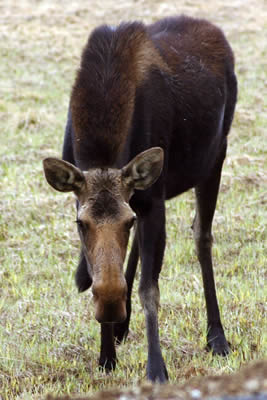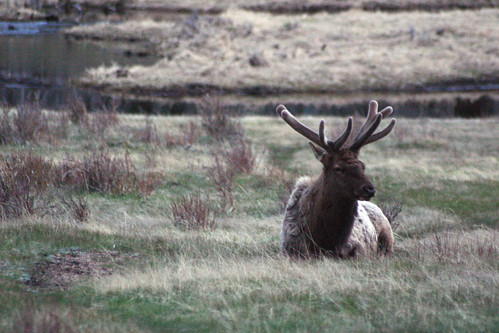In May 2005, Rachelle and I took a vacation to Colorado. After our slight detour into Utah to visit Arches and Canyonlands National Parks, we returned to Colorado and drove the scenic Rim Rock Drive through Colorado National Monument before continuing on our way east. We planned to spend the next couple of days at Rocky Mountain National Park before heading home.
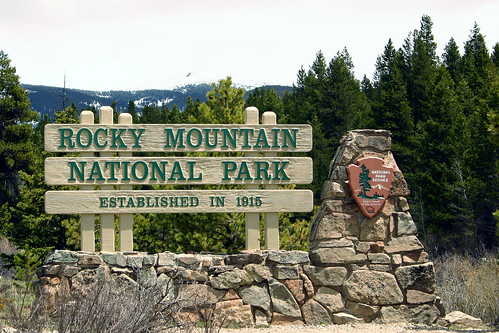
The obligatory photo of the park sign.
Kawuneeche Valley
Because Trail Ridge Road was closed for the winter, we couldn’t drive all the way through the park. So, on our way back east, we decided to visit the western section of the park before continuing on to Estes Park and the eastern portion of the park. We planned to drive as far up the road as we could, looking for wildlife and taking in the scenery along the way. I had heard before our trip that the park’s moose were to be found in this area of the park. First, we stopped at the Kawuneeche Visitor Center, where a ranger told us where several moose had been spotted recently. The ranger also showed us photos of the road crews that were working on clearing the snow off of Trail Ridge Road. With its highest elevation at 12,183 feet, Trail Ridge Road is the highest continuous paved road in the United States.
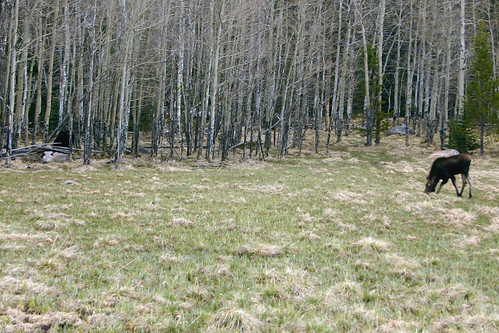
To our delight just after we had left the visitor center, we passed a clearing on our right with two moose grazing not far from the road. The second moose is at the left edge of the photo, just inside the woods.
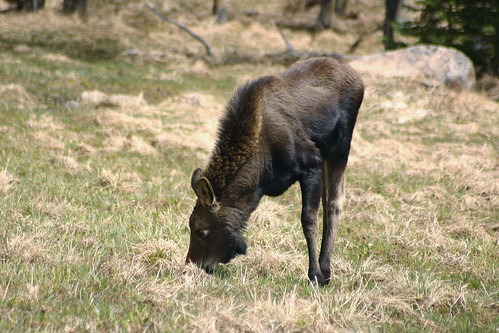
This one just seemed to go about his business grazing. Our presence didn’t seem to alarm him.
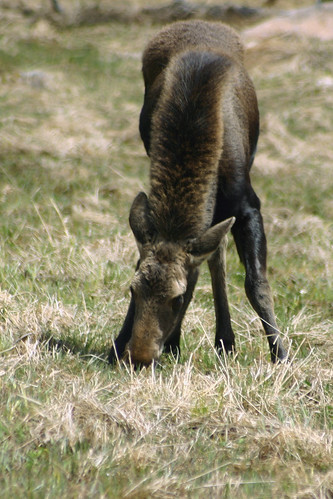
Moose are certainly a strange looking animal.
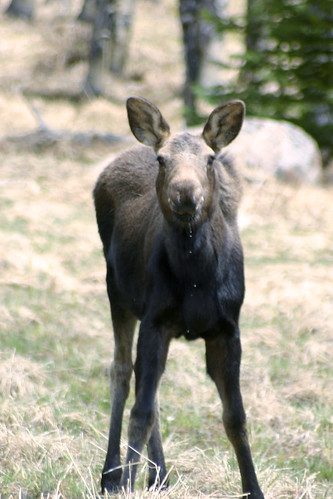
Uh-oh! I think we’ve been spotted.
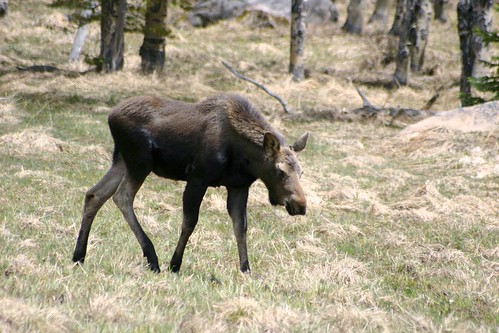
We stayed and watched these two for a while.
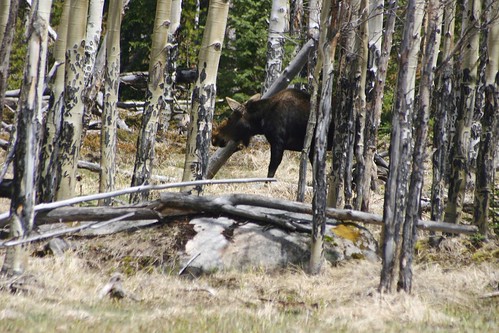
The other moose stayed in the woods the entire time we were observing them.
We resumed our drive up the valley excited that we had so easily seen some moose. Eventually, we passed another set of moose. One moose seemed smaller, so we supposed that this set was a mother and her yearling.
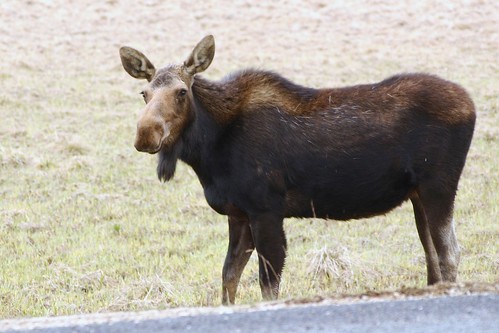
The mother moose is standing watch not far away.
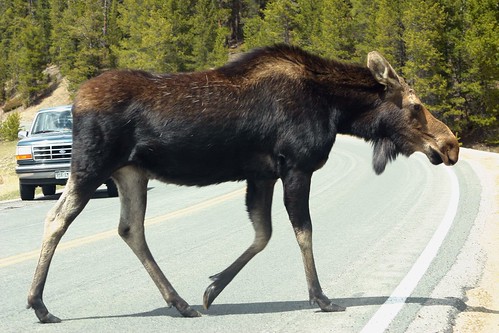
I was watching the yearling through my camera, when the older one started to cross the road. I hurriedly took this photo through my car’s windshield.
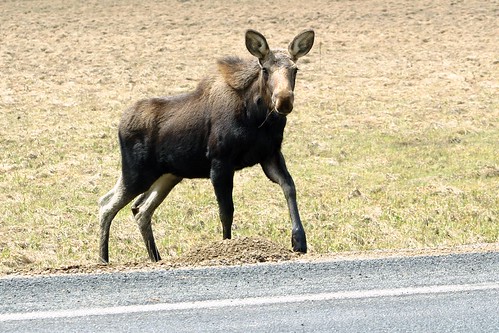
The yearling then noticed that his mother had left him, and he started across the road.
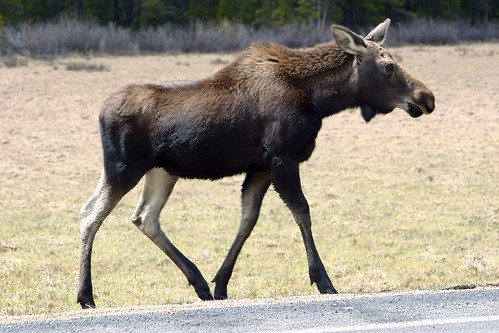
He paused at the side of the road…
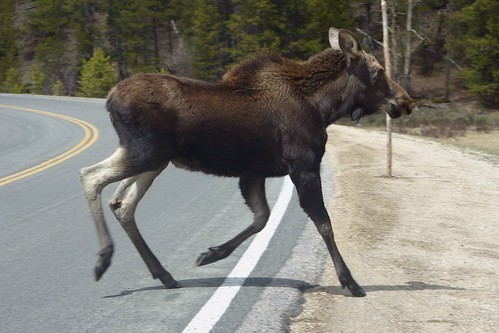
And then galloped his way over to the other side.
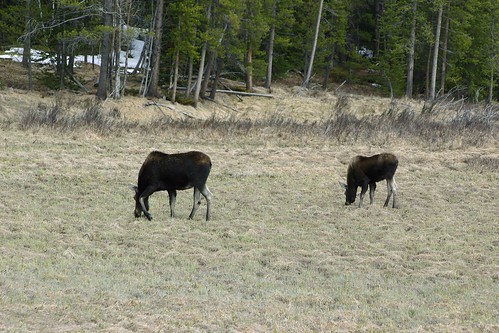
Mother and yearling were reunited on the other side of the road as we drove off.
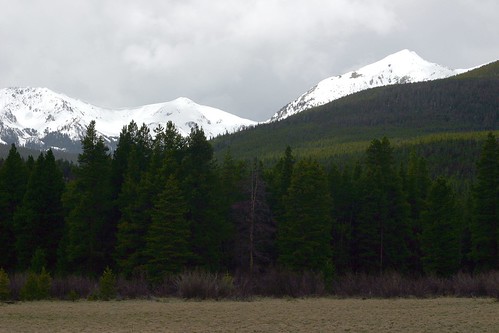
These are the snow-capped peaks of the Never Summer Mountains, which mark the western boundary of the park. We had driven through some bad weather on the way to the park, and it looked as if it was catching up to us.
We continued our drive as far as we could, returning the way we had come and enjoying the beautiful scenery along the way. Soon, we left this section of Rocky Mountain National Park and headed for the other side of the park.
Beaver Meadows
It was late in the day when we arrived at Estes Park, so we decided to head into the park in search of wildlife before the sun set.
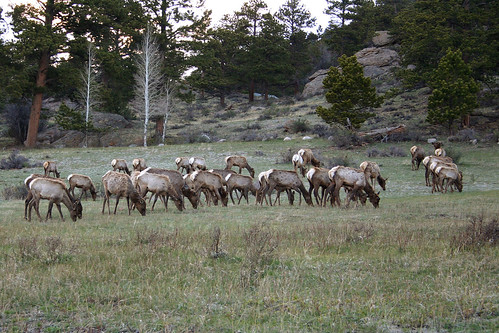
As we approached the Beaver Meadows Entrance Station, we saw a large herd of elk grazing in the nearby fields.
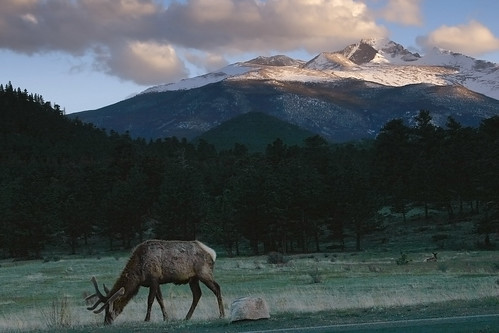
Towering above the clearing, Longs Peak is a silent sentinel. At 14,255 feet in elevation, it is the tallest mountain in Rocky Mountain National Park.
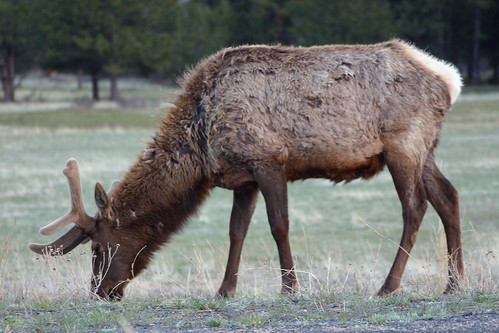
Here’s a close-up of the male elk from the previous photograph.
Horseshoe Park
Once we entered the park, we drove to Horseshoe Park looking for more wildlife.

This is the valley surrounding Horseshoe Park looking towards the west.
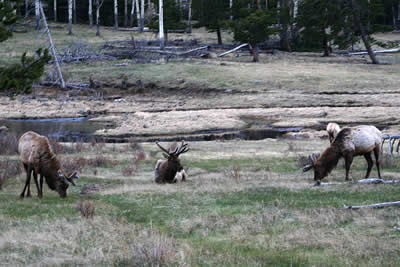
We stopped at Sheep Lakes, an area frequented by Bighorn Sheep, where we saw more elk.
The sun was setting and it was getting dark by this time, so we left the park. We would spend the next day visiting more of Rocky Mountain National Park.
